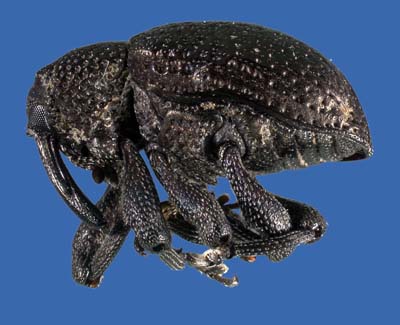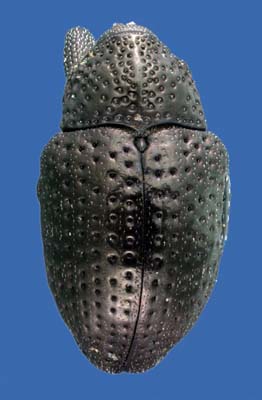To save the Web-optimized images shown below to your hard drive:
|
Click to access Display and Print quality images. |
|
Click to access Display and Print quality images. |
Copyright © 2005 University of Florida
The cowpea curculio feeds on legumes including cowpea, snap bean, lima bean, and pea. Some weeds may also serve as alternate hosts. Damage is done by both the adult and larval stages that feed on the seeds within pods. Insecticides are commonly applied in order to manage cowpea curculio populations. Cultural control practices include crop rotation, tillage, and destruction of alternate hosts. Host plant resistance may also be used. No commercial biological control products are currently available for managing cowpea curculio.
Images
To save the Web-optimized images shown below to your hard drive:

Cowpea curculio, Chalcodermus aeneus, adult.
(Photographer: L. Buss, University of Florida)
Click to access Display and Print quality images.

Cowpea curculio, Chalcodermus aeneus,
adult, dorsal view.
(Photographer: L. Buss, University of
Florida)
Click to access Display and Print quality images.
Copyright © 2005 University of Florida